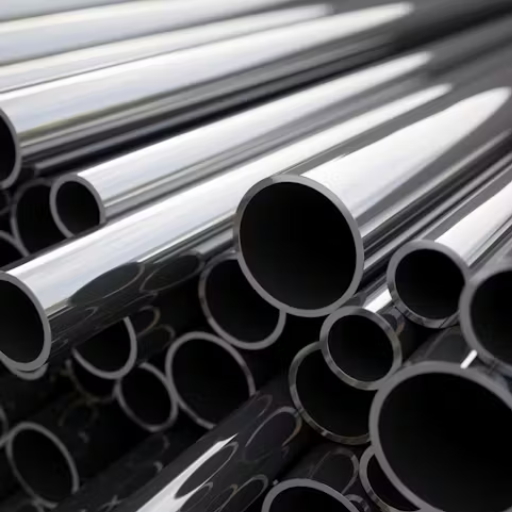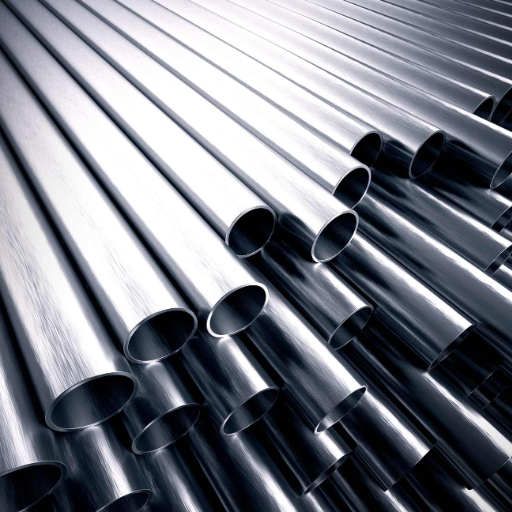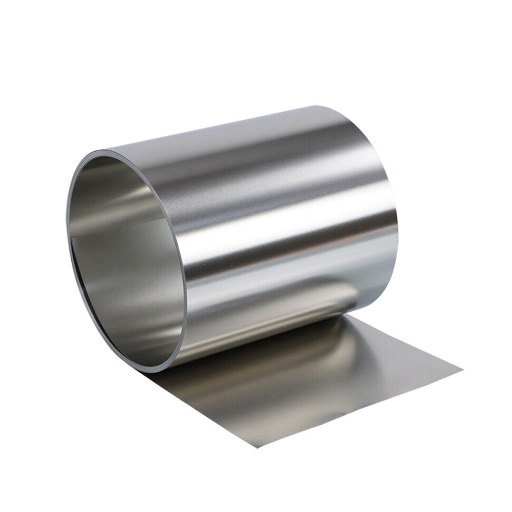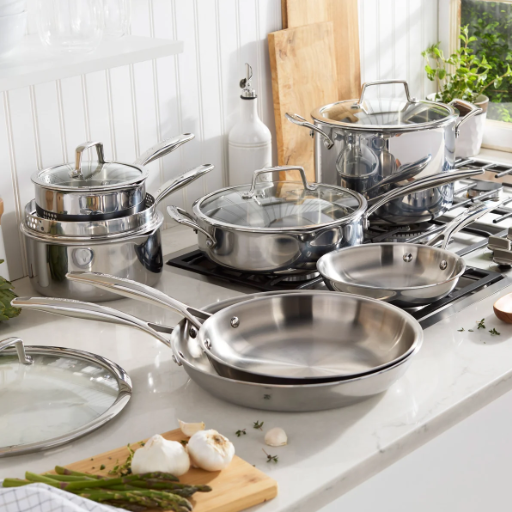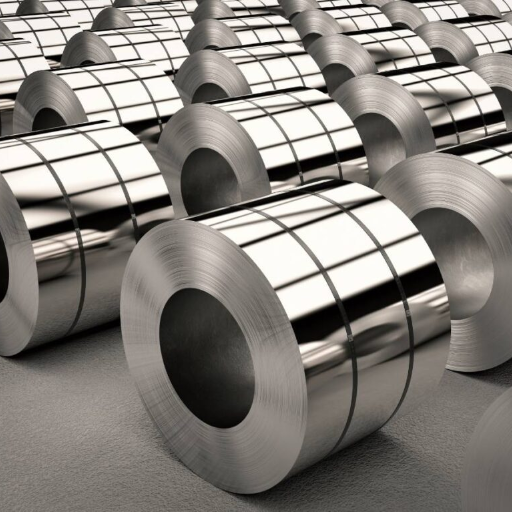Industries like construction, manufacturing, aerospace, and food processing utilize stainless steel plates. The most pertinent part is coming up with the exact dimensions, grades, and specifications to perfectly suit the project at hand. In this case, the focus will be on the most frequently utilized types of stainless steel, which include 304 and 316, their varying sizes, thicknesses, and other specific uses. This guide has been constructed for anyone who has experience working with stainless steel, as well as newcomers looking to further their understanding of this material. By the end of it, you will gain all the knowledge needed to make your projects achieve their desired performance and durability.
What are the standard dimensions for stainless steel plates?

For commercial and industrial uses, stainless steel plates come in standard sizes which are easy to obtain. Regular specifications include thicknesses between three sixteenths of an inch to six inches, 48 to 60 inch widths, and 96 to 120 inch lengths, but custom sizes can be made for specific projects to provide exactness and flexibility for different uses.
Common thickness ranges for stainless steel plates
When it comes to stainless steel plates, suggests they are customarily offered from 3/16 of an inch to 6 inches thick for standard usages. For a lightweight construction, thinner plates are often used while for heavy duty industrial applications, thicker plates are used for strength and durability. For specialized needs, custom thicknesses can be ordered or produced. This scope guarantees reliability and flexibility for numerous applications.
Standard width and length dimensions for stainless steel sheets
Default measurements of stainless steel sheets are 36”, 48”, and in some cases, it’s 60” wide. While the more common lengths are 96”, 120”, and 144” long. These sizes are standard across the industry so they can be used in different fabrication operations and project needs. You can also request your own sizes to meet specific needs or requirements.
How to calculate plate weight based on dimensions
For a stainless steel plate, I have an easy method to calculate the weight which includes the material’s density, and dimensions. Firstly, I calculate the volume of the plate by its length times the width times the thickness, ensuring that all the factors are in the same unit, generally in inches or millimeters. After that, I calculate the plate’s weight by multiplying the volume of the plate by the density of stainless steel, which is 0.289 pounds per cubic inch and 7.85 grams per cubic centimeter. This gives me the plate’s weight. This is why it is accurate and saves me time to calculate estimate material costs for a given project.
What’s the difference between 304 and 316 stainless steel plates?

The core distinction amongst types of plates 304 and 316 stainless steel is in their molybdenum inclusion and their resistance to corrosion. 316 stainless steel, for example, has a molybdenum inclusion which greatly improves its capability to withstand corrosion. This is particularly true for harsh environments and chlorides, thus, making it perfect for marine and chemical uses. On the other hand, 304 stainless steel is more economical as it provides amazing corrosion resistance and does well for general use, however it isn’t as durable as 316 in extremely corrosive conditions. The decision on which one to use is largely determined by the conditions and use requirements.
Comparing corrosion resistance of 304 and 316 grades
the performance differentiation in corrosion resistance for 304 and 316 stainless steel largely depends on the use case context. 316 steel is my steel of choice owing to its increased exposure to molybdenum which provides much greater resistance to pitting and crevice corrosion. This is particularly true at saltwater conditions, or in the presence of harsh acidic environments. Meanwhile, 304 steel is a good option for mildly aggressive environments. It is cost and performance effective for general purposes, but if there is a chance of a sustained attack of severe chemicals or a chloride enriched surrounding, I would not think twice before suggesting 316 for long term strength and efficiency.
Mechanical properties of 304 vs 316 stainless steel plates
Stainless Steel 304 and 316 share comparable values of tensile strength and yield strength, making both materials durable and useful in varying applications. However, 316 is better than 304 because of its superiority in corrosion resistance, particularly in marine or chloride environments due to the presence of molybdenum. If mechanical performance is the deciding factor in a less corrosive environment, 304 is a dependable and budget-friendly option. Yet, for more extreme use cases where superior strength is the requirement, 316 is the ideal answer.
Applications suitable for 304 and 316 stainless steel plates
the applications I have seen 304 stainless steel used in are fairly benign in terms of corrosion. Due to its affordability, it is widely used in food processing, kitchenware, and architecture. Nevertheless, for harsher conditions, I usually recommend using 316 stainless steel. It is invaluable in marine environments, chemical processing, and medical equipment due to its increased pitting and corrosion resistance. At the end of the day, the choice comes down to how much the environmental factors will cost and what budget limitations there are. I always recommend thinking about the overall lifespan of the investment too.
How do ASTM A240 specifications affect stainless steel plate dimensions?

The ASTM A240 standards are crucial in outlining the specific acceptable tolerances and dimensions for the stainless steel plates. There are standards provided in these documents which help take care of the width, thickness, and length of the part, which is essential for any standard engineering work. Following ASTM A240 means that the material is designed to meet very sophisticated engineering requirements, greatly reduce the ranges of tolerances, and increase interchangeability with other parts. This level of precision enables faster and easier manufacturing processes while also assuring that the end product steel structure can be depended on in service.
Understanding ASTM A240 tolerance requirements
If you need to comprehend ASTM A240 tolerance requirements, I can assure you that this standard is essential for the uniformity of quality in stainless steel goods. Let me explain it to you clearly:
- Thickness Tolerance: This is how much a stainless steel sheet or plate can be thinner or thicker than its target thickness. The ASTM A240 standard covering stainless steels includes variations that certain materials must not exceed to avoid being excessively thick or thin as they might compromise the structure’s strength and compatibility with other parts.
- Width and Length Tolerance: These tolerances are given as limits to the actual measurements of the sheet or plate in question. Maintaining control over these tolerances is crucial to ensure that there are no excessive gaps for the material in the intended application, which would necessitate additional machining and modification.
- Flatness Tolerance: Flatness refers to the degree to which the surface of the material is even. Deviations from flatness can make it challenging to align parts during assembly. The ASTM A240 standard covering stainless steels specifies these limits for primary and secondary operations to avoid this.
- Edge Tolerance: The edges of the sheets and the plates must be straight within certain boundaries to ensure safety during and after handling and ease the automatic manufacturing processes.
Thus far, these constraints have been established with the objective to improve reliability, minimize production errors, and ensure the finished product meets both mechanical and visual standards. Complying with ASTM A240 allows us to consistently provide exceptional materials that are highly functional in a multitude of uses. It’s all about accuracy and faith in the product in the end!
Impact of ASTM A240 on plate thickness and flatness
ASTM A240 is crucial in setting the boundaries for thickness and flatness concerning a plate’s surface since it ensures that manufacturers are able to rely on the document. The standard sets very specific limits on how much a plate’s thickness may vary to guarantee flat surfaces, which are necessary for the structural strength and functioning of the plate. Also, the flatness requirements will help to minimize the chances of having ‘banana’ plates which are difficult to fabricate or assemble. Compliance with these requirements ensures that high quality services are offered and at the same time improves efficiency while lowering material costs, which makes ASTM A240 greatly valued in terms of achieving optimum product results.
What are the key differences between 304 and 304L stainless steel plates?

The main difference between 304 and 304L stainless steel plates is their carbon content. 304L has lower carbon composition compared to 304, which increases its machinability and prevents carbide precipitation during welding. This makes 304L stainless plate material ideal for use in applications that require heavy welding since the chances of corrosion above the weld seams are greatly reduced. 304 stainless steel may be slightly stronger due to its high carbon composition, but 304L gets the nod for superior weldability and greater resistance to corrosion, hence, it is widely used for construction that needs high strength and durability.
Comparing chemical composition of 304 and 304L grades
While working in the field, it has become evident to me that the main difference between 304 and 304L is their carbon content, which determines their properties and applications. For example, 304 can have as much as 0.08% carbon, whereas 304L is designated as low-carbon and can only have a maximum of 0.03%. The lower amount of carbon in 304L is significant in mitigating the possibility of carbide precipitation during welding, which may cause intergranular corrosion. Both grades contain the same amount of chromium and nickel, which guarantees corrosion resistance during exposure to different environments. Nevertheless, that slight dip in carbon content allows 304L to better withstand welded structures, particularly where dependability in harsh conditions over a long period is essential.
Weldability and fabrication considerations for 304 vs 304L
In terms of manufacturability and weldability, 304 and 304L execute both brilliantly. Though, in welding operations, 304L’s lower carbon content greatly assists in reducing the possibility of chrome carbide precipitation, which is good for corrosion resistance. Hence, 304L is more appropriate for welded structures that are exposed to harsh conditions for a long duration. For general engineering purposes, both grades are relatively easy to fabricate, but 304L’s superior weldability more often than not makes it the preferred option where welding is important.
How to choose the right stainless steel plate dimensions for your project?

When determining which dimensions of a stainless steel plate you want for your project, I suggest always starting with the assessment of the application’s requirements. Take into account the approximate load, types of climate, as well as design limits. For example, strong plates are perfect for heavy duty uses, whereas a more decorative, light weight plate will achieve all necessary purposes. Also, make sure to factor in the forming or machining procedures—choosing dimensions that are efficient and economical will save time, money, and waste. Ultimately you want to get an optimal balance of strength, usability, and practicality to fulfill the requirements of the project.
Factors to consider when selecting plate thickness
While choosing the plate thickness, the key aspects to consider are the application’s structural requirements, the type of material used, the environmental conditions it will face, and the requirements of the manufacturing processes. Assessing these aspects properly will guarantee that the plate has the right strength, durability, and cost-efficiency for your needs.
Importance of width and length in fabrication processes
Knowledge gained over the years has taught me that the plate’s width and length are of utmost importance during any fabrication process. These dimensions influence the material utilization, cutting speed, and design parameters. Ensuring these parameters is a guarantee of decreasing waste, reducing costs, and preserving the design reliability. Planning these dimensions properly can simplify the workflow and reduce issues during assembly or installation. Mastering these elements has greatly improved the efficiency of project completions.
Custom cut-to-size options for stainless steel plates
Whether for structural, industrial machinery, or decorative use, custom cut-to-size options for stainless steel plates provide unmatched adaptability for fulfilling project needs. Using sophisticated cutting methods like laser, plasma, or waterjet cutting, manufacturers are able to produce stainless steel plates to precise measurements, which reduces waste and increases efficiency. This not only simplifies the production process, but also ensures the quality meets both design and performance standards.
What are the typical tolerances for stainless steel plate dimensions?

For basic tolerances on the dimensions of stainless steel plates, it is quite obvious that they differ with different manufacturing standards and application needs. Usually, for thickness, the average tolerances accepted vary between ±0.008 to ±0.030 inches depending upon the gauge and processing method used. Tolerances for width and length are frequently within ±0.125 inches, although, for precision applications, tighter tolerances are possible. Make sure to convey the specific requirements of your project, as some manufacturers are able to cater to specific tolerances for bespoke projects and these will guarantee the end product is in line with the project’s expectations.
Understanding thickness tolerances for various plate grades
Like every other construction material, tolerances of thickness for stainless steel plates vary, according to the grade and purpose of use. For standard grades such as 304 and 316, the tolerances are usually within ±0.010 to ±0.030 inches, depending on the gauge. More demanding ones like duplex or high-performance alloy grades may need tighter tolerances that specialty grades will sometimes need. Processing methods are equally as important—hot-rolled plates are manufactured such that they have looser tolerances than cold-rolled ones. Setting grade selection to your precise tolerance requirements will achieve higher performance and greater application suitability.
Width and length tolerances for stainless steel sheets
In the realm of tolerances concerning the length and width of stainless steel sheets, precision is vital for accomplishing an application. Based on my experience, most tolerances are roughly within ±0.125 inches for both measurements, but that is subject to change with different manufacturers and their processing methods. Non-standard sheets meant for specialized applications like architectural finishes or precision components usually require tighter tolerances. Also, one has to take into account the production method; coils will have sheets that are gradually less uniform than precision cut sheets. With these considerations in mind, I am able to guarantee that every project gets tailored materials to meet exact requirements.
How do hot-rolled and cold-rolled processes affect stainless steel plate dimensions?

Stainless steel plate dimensions and traits are affected by hot-rolled and cold-rolled processes. Hot-rolling is modifying steel above its recrystallization temperature. This method allows for easier shaping and sizing, but there is some variation in dimensions because of the cooling and shrinking. The plate produced through this method has higher tolerances and has a rougher appearance. On the other hand, cold-rolling is performed at lower temperatures resulting in a smoother and more uniform surface and higher precision. These plates are best for applications requiring tighter tolerances and smoother surfaces, whereas hot-rolled plates are better suited for structural applications where exact dimensions are not the focus.
Differences in surface finish between hot-rolled and cold-rolled plates
One difference that stands out between hot-rolled and cold-rolled stainless steel plates is their surface finish. Hot-rolled plates tend to have rough and scaly surfaces due to high temperature working and cooling. Such a finish is suitable for industries that do not prioritize aesthetics like construction and heavy machinery. Cold-rolled plates, however, are relatively smoother and more refined. The cold rolling process ensures minimum surface imperfections and a polished uniform appearance. Such plates are perfect for industries that require beauty and accuracy, for example, automotive or appliance manufacturing.
Impact of rolling processes on dimensional accuracy
The accuracy in dimensions achieved via cold rolling processes is significantly better than that of hot rolling. This is due to the fact that cold rolling is conducted at room temperature where there is better control over thickness and shape. In contrast, hot rolling uses higher temperature, which can cause small amounts of expansion and contraction during the cooling, therefore making the dimensions less precise. For these reasons, when a high degree of uniformity in measurements is needed, cold rolled plates will be the best choice.
Reference
- Comprehensive Guide to Standard Stainless Steel Sheet Sizes – MFY Steel
- Stainless Steel Plate Thickness Guide & Sizes – MFY China
- 304/304L & 316/316L Stainless Steel Sheet & Plate – American Stainless Corporation
Frequently Asked Questions (FAQs)
Q: What are the main differences between stainless steel plate 304 and type 316?
A: The main differences between 304 stainless steel plate and type 316 lie in their composition and corrosion resistance. 304 stainless steel contains 18% chromium and 8% nickel, while 316 has 16% chromium, 10% nickel, and 2% molybdenum. Type 316 offers better corrosion resistance, especially in marine environments, due to its molybdenum content. 304 is more commonly used and generally less expensive, suitable for a wide range of applications.
Q: What are the standard sizes available for stainless steel plate 304?
A: Stainless steel plate 304 is available in a variety of sizes. Common dimensions include 48″ x 96″, 48″ x 120″, and 60″ x 120″. Thicknesses typically range from 0.025″ to 6″. However, plate sizes can vary depending on the manufacturer and specific requirements. Custom cut-to-size options are also available for most ss 304 plate products.
Q: How does 316L differ from regular type 316 stainless steel?
A: 316L is a low-carbon version of type 316 stainless steel. The ‘L’ stands for low carbon, with a maximum carbon content of 0.03% compared to 0.08% in regular 316. This lower carbon content in 316L improves weldability and reduces the risk of carbide precipitation during welding, making it ideal for applications requiring extensive welding or exposure to corrosive environments.
Q: What are the most common applications for stainless steel plate grades 304 and 316?
A: Common applications for 304 stainless steel plate include kitchen equipment, food processing machinery, chemical containers, and architectural trim. Type 316 is often used in marine environments, chemical processing equipment, pharmaceutical manufacturing, and surgical implants due to its superior corrosion resistance. Both grades are widely used in the construction, automotive, and aerospace industries for their excellent strength-to-weight ratio and durability.
Q: How do stainless steel plates compare to aluminum plates in terms of properties and applications?
A: Stainless steel plates, such as ss 304 and 316, offer higher strength, better corrosion resistance, and higher temperature tolerance compared to aluminum plates. However, aluminum plates are lighter, have better thermal conductivity, and are often less expensive. Aluminum diamond plate is popular for non-slip flooring and decorative applications, while stainless steel plates are preferred for more demanding structural and corrosion-resistant applications.
Q: What is the difference between hot rolled annealed and cold rolled stainless steel plates?
A: Hot rolled annealed stainless steel plates are processed at high temperatures, resulting in a scale-free surface with good formability and ductility. They are ideal for applications requiring bending or forming. Cold rolled plates undergo additional processing at room temperature, providing a smoother surface finish, tighter tolerances, and increased strength. Cold rolled plates are often used in applications where aesthetics and precise dimensions are important.
Q: Are stainless steel plates available in sheet form, and what are the typical dimensions?
A: Yes, stainless steel is also available in sheet form. Stainless steel sheets are typically thinner than plates, with thicknesses ranging from 0.006″ to 0.25″. Common sheet sizes include 48″ x 96″ and 48″ x 120″. Both 304 stainless steel and 316L sheet products are widely available. Sheets are often used in applications requiring thinner gauge material, such as automotive body panels, appliance manufacturing, and architectural cladding.

